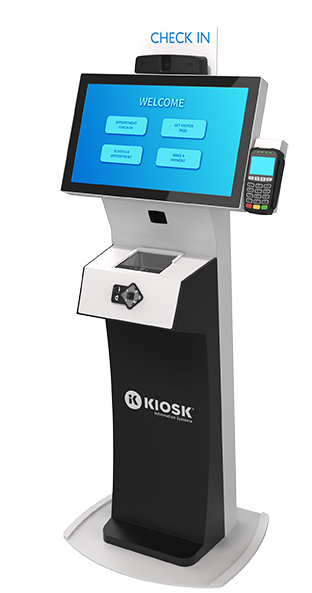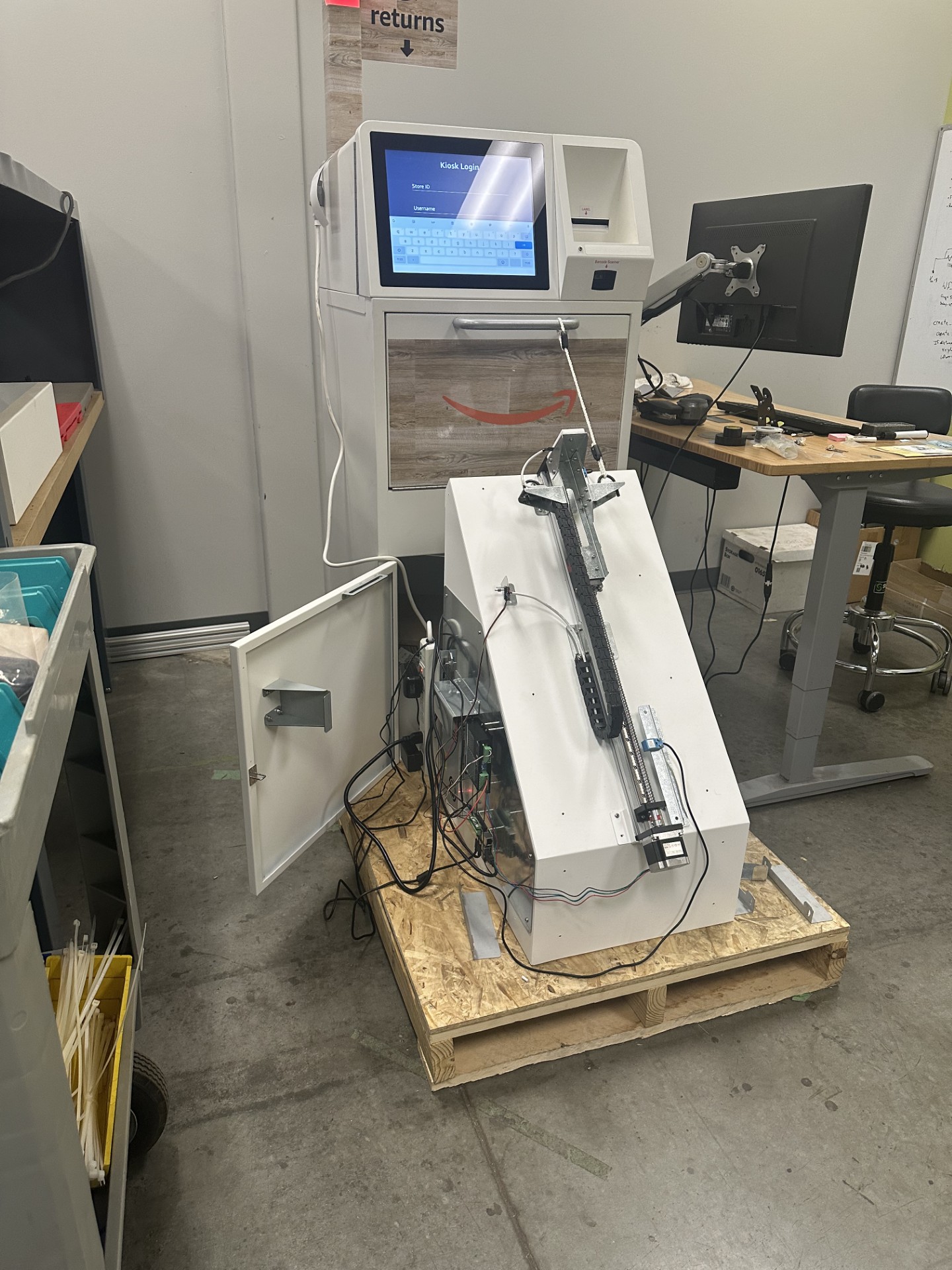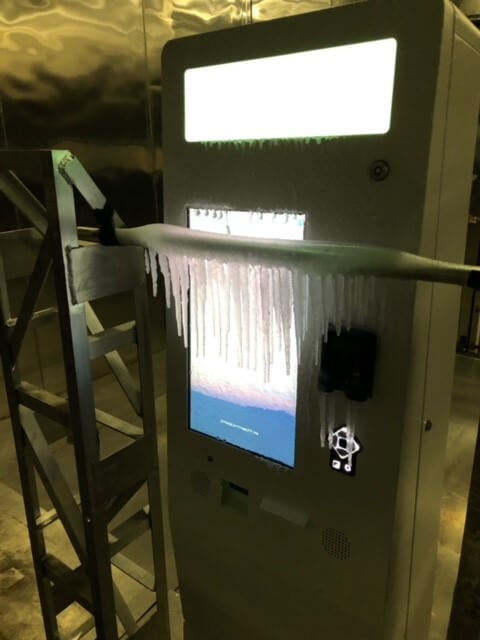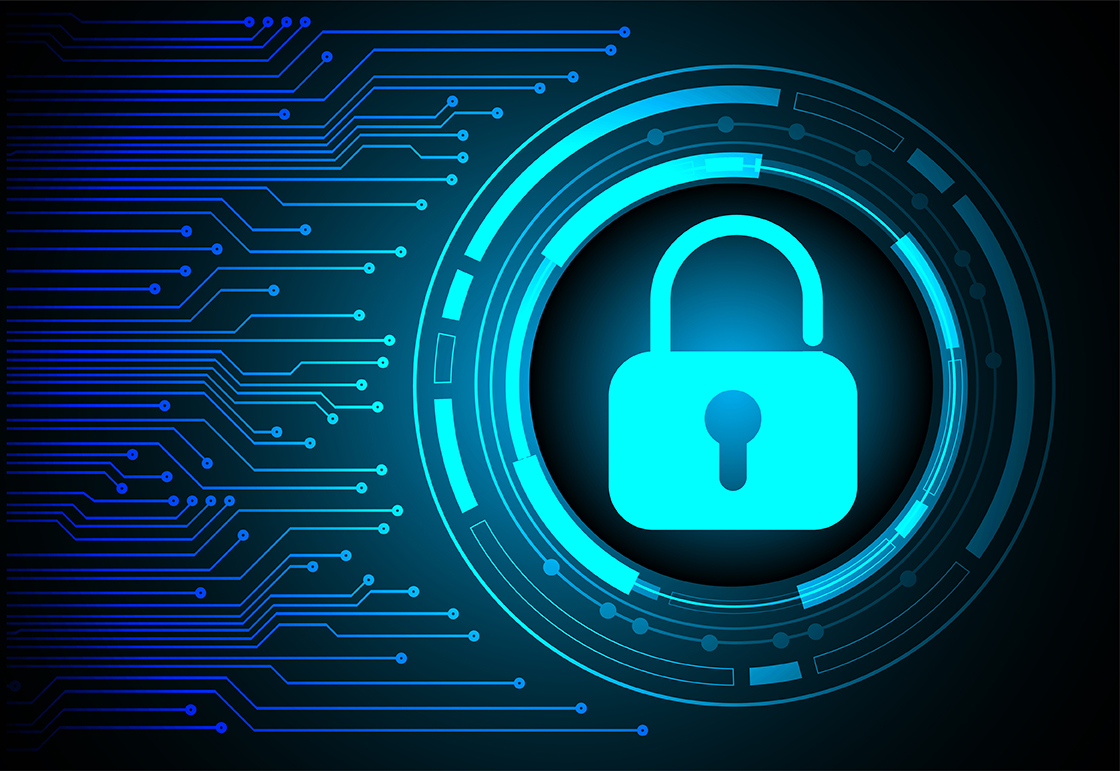One of KIOSK’s healthcare and hospital clients has served patients in the Northeastern U.S. for over 100 years. As a part of their commitment to patients, this healthcare system strives to keep up with the latest technologies for patient care and create a positive patient experience. Deploying patient check-in kiosks at their various locations has helped support these goals.
In Search of a Modern Patient Experience
The deployment team was in search of a solution that would streamline workflows and reduce workload for front-end reception staff. They wanted to reduce the time patients spent waiting to check-in to an appointment and move away from old fashioned and error-prone paper and pen data collection to a modernized patient check-in process. It was important that the solution would integrate with the hospital system’s existing EHR software to further streamline the patient experience.
The Challenge with Tablets
Initially, the healthcare system opted for a tablet-based solution for patient check-in. However, they quickly found that tablets didn’t meet all the team’s needs and posed challenges for patient use. Unstable Wi-Fi connections made the tablets unreliable, and the large handheld devices made it difficult for patients to take photos of IDs and insurance cards while sitting in waiting room chairs.
And since tablets aren’t designed for daily consumer use, the tablet fleet would likely need to be replaced on a yearly basis.
The Kiosk Solution
Since tablets weren’t the right solution, the client decided to move forward with a deployment of patient check-in kiosks. They began with a pilot of six kiosks, and now have a full fleet deployment of 135 kiosks across multiple facilities.
These kiosks not only solved issues posed by tablets, but also added functionality that provided benefits to patients and staff.
The ability to connect kiosks to hardline internet greatly improved the reliability of internet connection during the check-in process. And because the kiosks are freestanding, patients can easily hold IDs and insurance cards up to the integrated cameras. Additionally, patient check-in kiosks gave patients the ability to make copays during check-in.
The Results
After implementing patient check-in kiosks, the deployment team found that this solution met their initial goals, and even provided some additional benefits.
Front desk staff were able to dedicate time to tasks beyond patient check-in and were readily available to help patients who prefer an in-person check-in process. Patients’ average door-to-door time was reduced and, for patients who completed forms before arriving, the check-in process could take less than two minutes.
Because the patient check-in kiosks are equipped to take payments, POS collections increased.
Data accuracy improved when patients were able to directly enter and confirm personal and insurance information.
Because kiosks are designed to withstand daily consumer usage, the kiosk units will not need to be replaced for several years.
Conclusion
Ultimately, the patient check-in kiosk deployment has been a success for this client. The team notes that the kiosks have been adopted by patients of all ages, and those who prefer to check-in with front desk staff are easily able to do so with less wait time. At busy times, kiosks work in tandem with front desk staff to keep patients moving through reception smoothly.
Practices that were part of the initial kiosk deployment have requested more units, and check-in kiosks are in demand at practices that haven’t yet deployed them. The healthcare system has seen an overall improvement in quality for patients and staff, and plan to continue to grow their kiosk deployment by 66% in 2024.
This client’s growing kiosk deployment and similar success stories in other healthcare systems have established the patient check-in kiosk as a reliable and repeatable solution to modernize the patient experience and support front end staff.
Contact KIOSK to discuss a patient check-in kiosk deployment at your organization.






